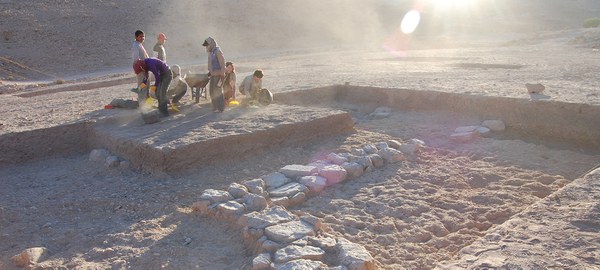In 1979, Dumbarton Oaks hosted the first international gathering of scholars and students of Roman garden archaeology with the Ancient Roman Gardens spring colloquium, published in 1981, edited by Elisabeth Blair MacDougall (Dumbarton Oaks) and Wilhelmina Jashemski (University of Maryland), number seven in the Dumbarton Oaks Colloquium on the History of Landscape Architecture series. In 1982, it awarded a project grant to Jashemski, whose groundbreaking archaeological work and book, The Gardens of Pompeii, Herculaneum, and the Villas Destroyed by Vesuvius, investigated diverse questions about the designed landscape, from studies of natural history, hydraulics, rural economy, and daily life to retrieval of ancient garden layouts and botanical remains.
In 1984, Elisabeth Blair MacDougall and Wilhelmina Jashemski presented further archaeological findings at the Garden and Landscape Studies symposium, published in 1987 as Ancient Roman Villa Gardens, number ten in the Dumbarton Oaks Colloquium on the History of Landscape Architecture series. These two symposia and publications brought together archaeologists from throughout Europe and the Mediterranean to share the results of garden excavations and archaeological inquiry into classical garden culture, creating a community of scholars and establishing Roman gardens as a field of scholarly study.
Jashemski also credits the conferences for establishing the collaborative format of Gardens of the Roman Empire, which she edited with Kathryn Gleason, Kim J. Hartswick, and Amina-Aïcha Malek. The project comprises two parts: a print book of 18 essays and an encyclopedic collection of all known Roman garden sites assembled by over 80 contributors. A 2003 colloquium at Dumbarton Oaks presented the essays, later published in the beautifully illustrated print volume Gardens of the Roman Empire (Cambridge University Press, 2018) with a subvention from Dumbarton Oaks. Dumbarton Oaks is currently a collaborator on the Gardens of the Roman Empire website, offering the encyclopedia of known sites and other evidence for Roman garden culture in an open-access, searchable format, available in April 2021 at https://roman-gardens.github.io/home/.
Beyond the ancient world, Dumbarton Oaks has brought together archaeologists from all time periods to develop strategies for excavating gardens and designed landscapes internationally. Beginning in 2001, through roundtables and fellowships, the three directors of studies, Michel Conan, Jeffery Quilter, and Alice-Mary Talbot, oversaw the development of The Sourcebook for Garden Archaeology, edited by former fellow Amina-Aïcha Malek (Peter Lang, 2013). As part of this initiative, Dumbarton Oaks also provided support to the formation of a steering committee for the Society for Garden Archaeology.
Dumbarton Oaks supported the field through project grants. In addition to support for the work of Wilhelmina Jashemski, a 1998 project grant was awarded to Allan Klynne and Peter Liljenstolpe for excavation of gardens at the Villa of Livia ad gallinas albas at Prima Porta, long famous for its spectacular painted garden room. In 2001, a project grant was awarded for the Petra Garden Feasibility Study, a two-week field study directed by former Dumbarton Oaks fellow Leigh-Ann Bedal (Penn State/Behrend), Larry Conyers (Denver University), and Kathryn Gleason (Cornell University) to test nondestructive archaeological methods. The project, later named the Petra Garden and Pool Project, was designed to play a key role in the methodology presented in the Sourcebook for Garden Archaeology. In 2020–2022, Dumbarton Oaks supported Caitlín Barrett’s project, Modeling Space and Experience at Pompeii: The Casa della Regina Carolina Project. Project proposals in all areas of garden and landscape archaeology are welcome.
Image: Excavation of a promenade through the Petra Garden and Pool Project (photo: Petra Pool and Garden Project)

